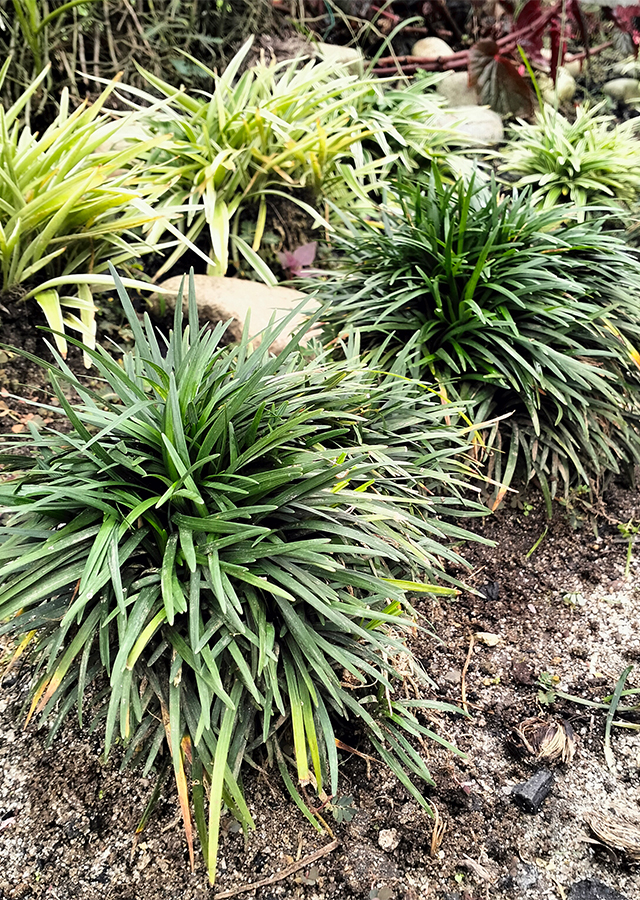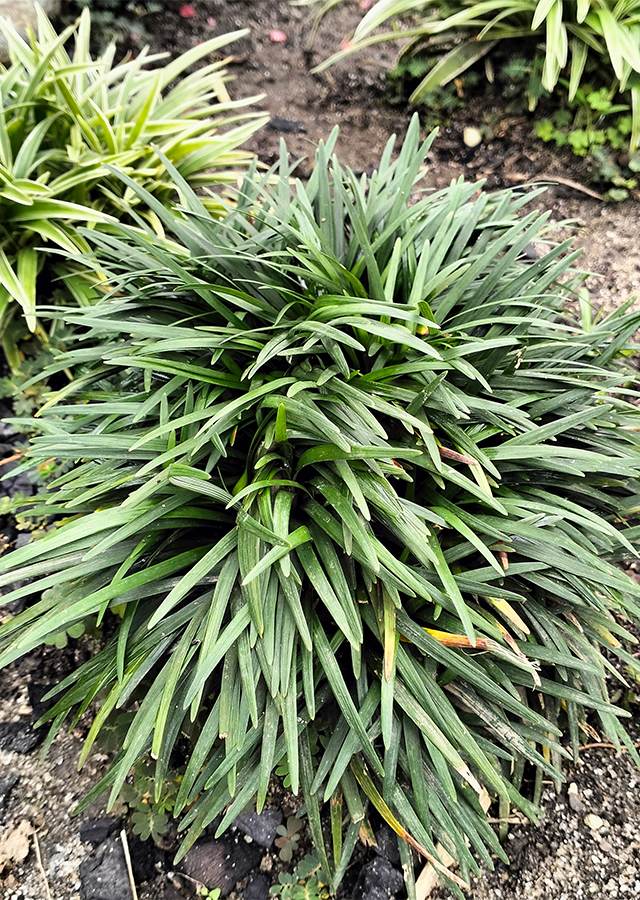Traditional Herbs from Ophiopogon japonicus
treating_dry_cough
- Prepare enough mini chive roots, wash them thoroughly.
- Boil until boiling.
- Let it warm/cool.
- Strain then drink.
What is Ophiopogon japonicus Looks like??



Parts of Ophiopogon japonicus that could be used
- Leaves
- Roots
- Rhizomes
Ophiopogon japonicus Distribution
Ophiopogon japonicus or mini chives is a species from the Asparagaceae family that originates from East Asia (China, Japan, Korea, Taiwan), Vietnam, India and the Philippines. The genus name comes from the Greek, ophis which means snake and pogon which means beard. This plant is often cultivated as a medicinal plant, and is also planted as an ornamental plant because of its tufts of grass-like leaves as ground cover. The tuberous roots are edible and eaten as a famine food. In China, apart from being used as food, the roots are also often used as a substitute for ginseng.Agroecology of Ophiopogon japonicus
Minigrass can be found growing in shady places in lowlands and foothills, forests, mossy forests, dense undergrowth in ravines, damp and shady places on slopes and along rivers and cliffs. Grows well in full sun or partial shade in well-drained sandy loam soil. Minigrass is sometimes grown as a houseplant for freshwater aquariums, but because it is not a true aquatic plant, it can live underwater for several months before dying. Although it tolerates temperatures of around 20 °C when dormant in winter outdoors in normal soil, when kept fully submerged it requires a water temperature of 18 - 25 °C.
Morphology of Ophiopogon japonicus
- The roots are aromatic, sweet and slimy, fibrous, large stolons with tuberous roots. The stolons are creeping and slender, the roots are quite thick, usually with a tuberous part near the middle or tip.
- Leaves are simple, basal, sessile, linear, generally about 15\u201350 cm long and 2\u20134 mm wide, 3\u20137 parallel veins, serrated leaf edges dark green above and pale greyish below.
- Flowers\u00a0solitary or in pairs, usually pendant, peduncle 34 mm, white or pale purple, lanceolate, about 5 mm long and 2 wide mm. The anthers are very short, the anthers are about 2.53 mm long and the pistils are narrow, medium-thick, wide at the base leaves, 1\u201320 cm long, several to more than 10 in flower with lanceolate white bracts.\u00a0
- Berries blue-black, subglobose to ellipsoid-globose, pea-sized, 5\u20139 mm in diameter.
Cultivation of Ophiopogon japonicus
Plant propagation through seeds and dividing or breaking up clumps.
Ophiopogon japonicus, more details :
Chemical Content of Ophiopogon japonicusHomoisoflavonoids (ophiopogonanone C, ophiopogonanone D, ophiopogonone C, ophiopogonanone E, and ophiopogonanone F), sesquiterpene glycoside (ophioside A), monoterpene glycoside (ophiopogonol), spirostans (ophiogenin), ophiopogonol, essential oils, steroidal saponins.
Benefits of Ophiopogon japonicus
Sedative, treats dry coughs, sore throats, insomnia, diabetes, constipation, diphtheria, disorders related to cardiovascular disease, helps cure canker sores, stimulates breast milk in nursing mothers, reduces fever. Has activity as an antiseptic and anti-inflammatory.
Simplisia of Ophiopogon japonicus
Another Facts for Ophiopogon japonicus :
Synonym of Ophiopogon japonicusConvallaria japonica Thunb., Flueggea japonica (Thunb.) Rich., Mondo japonicum (Thunb.) Farw.
Habitus of Ophiopogon japonicus
Herb. Herbaceous, stemless, short grass-like herb that grows up to 30 cm tall
Habitat of Ophiopogon japonicus
- Coast", "Mountains", "Land
No comments:
Post a Comment